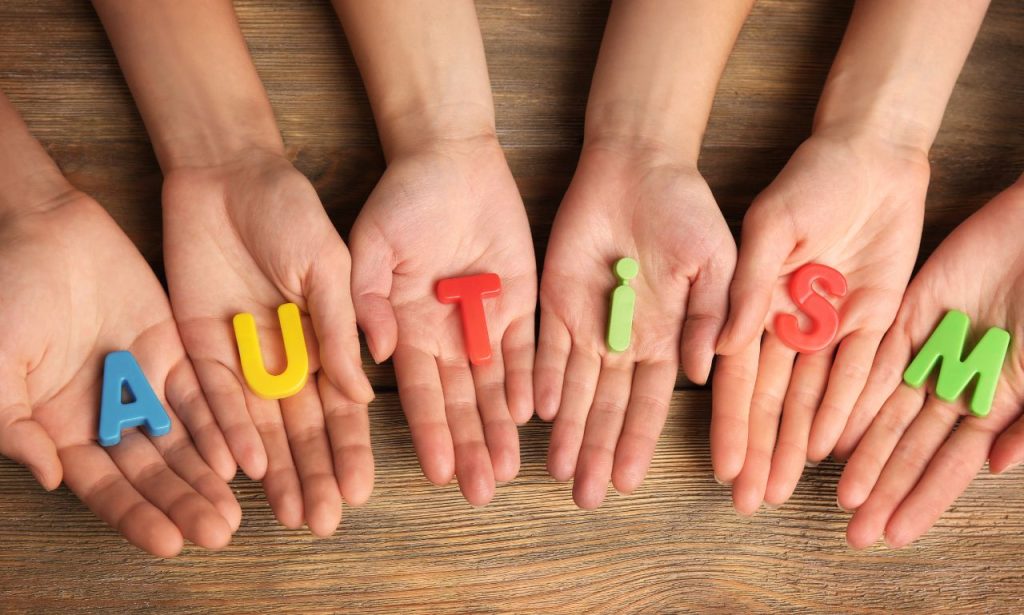You see a child, seemingly lost in their own world, flapping their hands, and avoiding eye contact. Maybe you overhear a conversation about a “spectrum” and wonder what it all means. Perhaps you’re concerned about a loved one or seeking information for yourself. Understanding autism goes beyond recognizing outward behaviors; it’s about embracing the diverse tapestry of human cognition and celebrating neurodiversity. This comprehensive guide delves into the multifaceted world of autism, equipping you with the knowledge to approach this complex condition with empathy, understanding, and a commitment to inclusivity.
What is Autism Spectrum Disorder (ASD)?
Symptoms of Autism
While the autism spectrum is incredibly diverse, some core areas are often affected. Keep in mind that these symptoms vary widely in severity and presentation from person to person.

Individuals with autism may find social situations perplexing and overwhelming. They might:
- Struggle with Nonverbal Communication: Interpreting facial expressions, understanding gestures, or using eye contact effectively can be challenging. Imagine trying to decipher a foreign language without a dictionary; social cues can feel equally perplexing.
- Find Social Engagement Difficult: Initiating or maintaining conversations, understanding humor and sarcasm, or navigating social dynamics can be overwhelming, leading to anxiety or social withdrawal.
- Experience Difficulty with Emotional Reciprocity: Understanding and responding to the emotions of others or expressing their own emotions appropriately can be a significant hurdle.
Finding Comfort in Repetition
Repetitive behaviors can provide a sense of comfort, predictability, and control in a world that often feels overwhelming. These behaviors might include:
- Repetitive Motor Movements: Hand-flapping, rocking, spinning, or lining up objects are common ways individuals with autism self-soothe and regulate sensory input.
- Insistence on Sameness: Changes in routine, transitions, or unexpected events can be highly distressing, leading to anxiety or meltdowns. Imagine having your internal GPS suddenly rerouted without warning; that’s the level of disorientation change can cause.
- Fixated Interests: Individuals with autism often develop intense, focused interests in specific topics, pursuing them with remarkable passion and depth of knowledge. These interests can be a source of joy, motivation, and even future career paths.
A World of Heightened Senses
The world can feel like an assault on the senses for individuals with autism. Imagine experiencing everyday sounds, sights, smells, tastes, or textures at an amplified level.
- Hypersensitivity: Some individuals are highly sensitive to sensory input. A flickering fluorescent light, the hum of an appliance, or the tag on a shirt can be unbearable.
- Hyposensitivity: Others might crave intense sensory experiences, seeking out pressure, movement, or strong flavors.
- Sensory Seeking/Avoiding Behaviors: Individuals may engage in behaviors to regulate their sensory input, such as seeking out deep pressure (e.g., weighted blankets), avoiding certain textures (e.g., refusing to wear certain fabrics), or making repetitive noises.
Types of Autism
While the term “Autism Spectrum Disorder” is now the umbrella diagnosis, you might still encounter older terminology. It’s important to note that these categories are no longer considered distinct diagnoses but rather points along the same spectrum.
- Autistic Disorder: This term was previously used to describe individuals with significant language delays, social challenges, and repetitive behaviors.
- Asperger Syndrome: Individuals with Asperger’s Syndrome typically have average or above-average intelligence and strong language skills but may struggle with social interactions, have restricted interests, and exhibit repetitive behaviors.
- Pervasive Developmental Disorder Not Otherwise Specified (PDD-NOS): This diagnosis was used for individuals who displayed some autistic traits but didn’t fully meet the criteria for other diagnoses.
Causes of Autism
The exact causes of autism are still being investigated, but research points to a complex interplay of genetic and environmental factors. Imagine a puzzle with multiple pieces contributing to the overall picture.
Genetic Factors
- Inherited Genetic Predisposition: Research suggests that autism can run in families, indicating a genetic component. However, it’s not as simple as inheriting a single “autism gene.” Multiple genes likely interact to influence an individual’s likelihood of developing ASD.
- Genetic Mutations: Spontaneous gene mutations, not inherited from parents, can also play a role in some cases of autism.
Environmental Influences
While genetics lays the groundwork, environmental factors during pregnancy and early childhood might influence how autism manifests.
- Prenatal Factors: Exposure to certain infections (e.g., rubella) or medications during pregnancy has been linked to an increased risk of autism.
- Premature Birth: Babies born prematurely or with low birth weight may have a higher likelihood of developing ASD.
- Environmental Toxins: Research is exploring potential links between exposure to environmental toxins (e.g., pesticides, air pollution) and autism, but more conclusive evidence is needed.
Common Misconceptions About Autism
Misinformation and stereotypes can be more harmful than helpful. Let’s debunk some common myths surrounding autism:
| Myth | Fact |
| People with autism lack empathy. | Individuals with autism may express empathy differently. They may struggle to understand and respond to social cues but can be deeply compassionate and form strong bonds with others. |
| Autism is a disease that needs a cure. | Autism is a neurodevelopmental difference, not a disease. Instead of seeking a “cure,” the focus should be on acceptance, understanding, and providing support to help individuals with autism thrive. |
| Vaccines cause autism. | This claim has been thoroughly debunked by numerous scientific studies. There is no credible evidence to support a link between vaccines and autism. |
| People with autism are all the same. | The autism spectrum is incredibly diverse. Each individual has their unique strengths, challenges, and personality traits. To assume all autistic individuals are alike is like saying all trees are the same because they have leaves. |
Understanding the Spectrum
Understanding the concept of neurodiversity is crucial in shifting perspectives about autism. Neurodiversity emphasizes that variations in human brains and minds are natural and valuable. It recognizes that conditions like autism are not “deficits” but rather different ways of experiencing and interacting with the world.
Diagnosis of Autism

Early diagnosis and intervention are crucial for providing appropriate support and resources. If you suspect you or your child might be on the spectrum, consult with a qualified healthcare professional.
Early Detection
- Routine Well-Child Visits: Pediatricians use standardized screening tools to assess developmental milestones during well-child visits.
- Specific Autism Screenings: If concerns arise, more specialized screenings, such as the Autism Diagnostic Observation Schedule (ADOS-2), can be administered.
Comprehensive Evaluation
- Multidisciplinary Team: Diagnosing autism typically involves a team of professionals, including psychologists, developmental pediatricians, speech-language pathologists, and occupational therapists, who conduct comprehensive assessments.
- Behavioral Observations: Clinicians observe the individual’s behavior, social interactions, and communication skills.
- Developmental History: Gathering information about the individual’s developmental milestones, medical history, and family history is essential.
Conclusion
Navigating the world of autism can feel like embarking on a journey without a map. But remember, knowledge is power. By understanding the complexities of autism, challenging misconceptions, and embracing neurodiversity, we can create a more inclusive and supportive world for individuals on the spectrum. Remember, behind the diagnosis, there’s a unique individual with their own strengths, passions, and dreams. Let’s strive to understand the person, not just the diagnosis.
ALSO READ: How Do You Prove Undue Influence
FAQs
Autism and intellectual disability are distinct conditions. While some individuals with autism may also have an intellectual disability, many have average or above-average intelligence. Autism primarily affects social communication and behavior, while intellectual disability impacts cognitive abilities and adaptive functioning.
Yes, girls can be autistic, but they are often diagnosed later than boys. This could be due to a combination of factors, including differences in how autism presents in girls, gender biases in diagnostic criteria, and girls being better at masking their symptoms.
If you have concerns about your child’s development, talk to your pediatrician. They can assess your child’s development, provide guidance, and make referrals for further evaluation if needed.
Reputable organizations like Autism Speaks, the Autism Society of America, and the Autistic Self Advocacy Network offer valuable information, resources, and support for individuals with autism, their families, and professionals.




